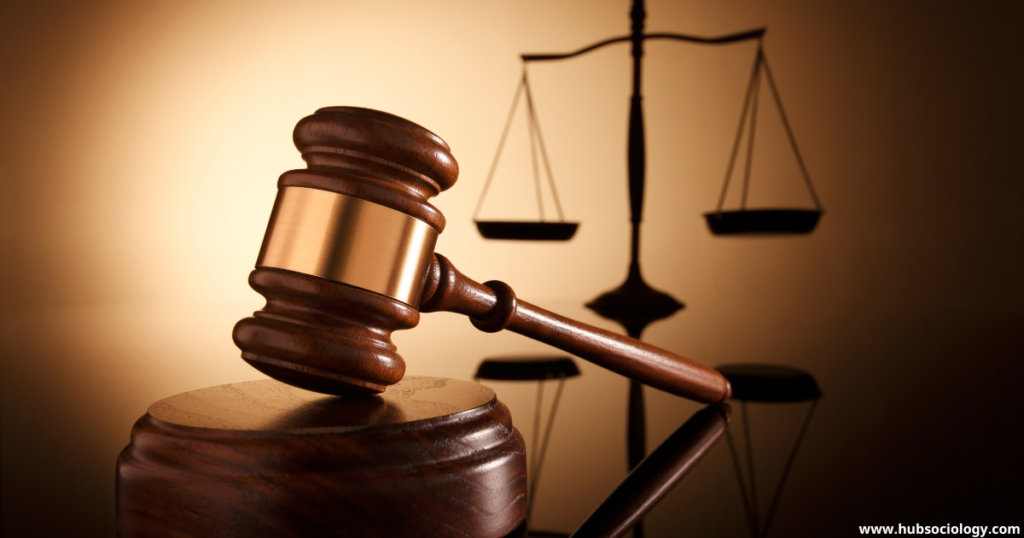Émile Durkheim, a founding figure in sociology, revolutionized the discipline with his scientific approach to studying society. His concepts—social facts, mechanical and organic solidarity, anomie, and collective consciousness—remain foundational in sociological theory. For UGC NET Sociology aspirants, mastering Durkheim’s ideas is essential, as his work frequently appears in exams.

This article provides 50 carefully crafted MCQs on Emile Durkheim’s major contributions, including:
- The Division of Labor in Society
- Suicide: A Study in Sociology
- The Elementary Forms of Religious Life
- Functionalism and social order
Each question is designed to test conceptual clarity, analytical skills, and application ability—key for cracking NET/JRF. Answers include detailed explanations to reinforce learning. Whether revising core theories or practicing for the exam, these MCQs will help you identify strengths, address weaknesses, and boost confidence.
MCQs on Emile Durkheim
1. Who is considered the father of sociology as an academic discipline?
a) Karl Marx
b) Max Weber
c) Emile Durkheim
d) Auguste Comte
Answer: c) Emile Durkheim
2. Durkheim’s famous work “The Division of Labor in Society” primarily discusses:
a) Class struggle
b) Mechanical and organic solidarity
c) Protestant ethic
d) Social action
Answer: b) Mechanical and organic solidarity
3. According to Durkheim, which type of solidarity is based on similarity and found in traditional societies?
a) Mechanical solidarity
b) Organic solidarity
c) Anomic solidarity
d) Contractual solidarity
Answer: a) Mechanical solidarity
4. What concept did Durkheim introduce in his study of suicide?
a) False consciousness
b) Social integration
c) Iron cage
d) Verstehen
Answer: b) Social integration
5. Which of the following is NOT a type of suicide identified by Durkheim?
a) Egoistic
b) Altruistic
c) Anomic
d) Fatalistic (Note: Some sources include it, but it was less emphasized)
Answer: d) Fatalistic
6. Durkheim’s concept of “anomie” refers to:
a) Excessive regulation in society
b) Normlessness and lack of moral regulation
c) High social cohesion
d) Economic exploitation
Answer: b) Normlessness and lack of moral regulation
7. In “The Elementary Forms of Religious Life,” Durkheim argued that religion is:
a) An illusion created by the ruling class
b) A reflection of society’s collective consciousness
c) A tool for economic control
d) An individualistic experience
Answer: b) A reflection of society’s collective consciousness
8. According to Durkheim, social facts are:
a) Subjective beliefs
b) External, coercive, and general societal norms
c) Economic laws
d) Psychological tendencies
Answer: b) External, coercive, and general societal norms
9. Which of Durkheim’s works is a foundational text in the sociology of education?
a) The Protestant Ethic and the Spirit of Capitalism
b) Moral Education
c) The Rules of Sociological Method
d) Economy and Society
Answer: b) Moral Education
10. Durkheim viewed crime as:
a) Always harmful to society
b) A normal and inevitable part of society
c) A result of biological factors
d) A sign of complete social breakdown
Answer: b) A normal and inevitable part of society
11. Durkheim’s methodological approach is best described as:
a) Interpretive
b) Positivist
c) Conflict-oriented
d) Phenomenological
Answer: b) Positivist
12. Which term refers to the shared beliefs and values in society, according to Durkheim?
a) Ideology
b) Collective conscience
c) False consciousness
d) Social capital
Answer: b) Collective conscience
13. According to Durkheim, the transition from mechanical to organic solidarity is driven by:
a) Political revolutions
b) Increasing division of labor
c) Religious reforms
d) Technological determinism
Answer: b) Increasing division of labor
14. Durkheim’s study of suicide was based on:
a) Psychological case studies
b) Statistical analysis
c) Ethnographic fieldwork
d) Historical materialism
Answer: b) Statistical analysis
15. Which type of suicide occurs due to excessive social regulation?
a) Egoistic
b) Altruistic
c) Anomic
d) Fatalistic
Answer: b) Altruistic
16. Durkheim argued that punishment in primitive societies is:
a) Rehabilitative
b) Repressive
c) Restitutive
d) Non-existent
Answer: b) Repressive
17. Which of the following is a key feature of organic solidarity?
a) Homogeneity
b) Interdependence
c) Strong collective conscience
d) Low division of labor
Answer: b) Interdependence
18. Durkheim’s concept of “sacred” and “profane” is central to his study of:
a) Politics
b) Religion
c) Economy
d) Education
Answer: b) Religion
19. According to Durkheim, the primary function of education is:
a) Economic productivity
b) Socialization and moral education
c) Political indoctrination
d) Cultural entertainment
Answer: b) Socialization and moral education

20. Which of the following is NOT a social fact, as per Durkheim?
a) Laws
b) Customs
c) Personal preferences
d) Religious beliefs
Answer: c) Personal preferences
21. Durkheim’s study of religion in “The Elementary Forms of Religious Life” was based on:
a) Christianity
b) Totemism among Australian Aborigines
c) Hinduism
d) Ancient Greek mythology
Answer: b) Totemism among Australian Aborigines
22. According to Durkheim, the primary role of religion is to:
a) Control the masses
b) Reinforce social cohesion and collective consciousness
c) Promote economic growth
d) Provide individual salvation
Answer: b) Reinforce social cohesion and collective consciousness
23. Which of the following best describes Durkheim’s view on the relationship between individuals and society?
a) Society is a mere sum of individuals
b) Society is a reality sui generis (of its own kind)
c) Individuals shape society through rational contracts
d) Society is an illusion created by power structures
Answer: b) Society is a reality sui generis
24. Durkheim’s approach to studying society is known as:
a) Conflict theory
b) Functionalism
c) Symbolic interactionism
d) Rational choice theory
Answer: b) Functionalism
25. Which of the following is a criticism of Durkheim’s theory of suicide?
a) It ignores psychological factors
b) It overemphasizes economic causes
c) It relies too much on statistical correlations
d) It is based on small-scale ethnographic studies
Answer: c) It relies too much on statistical correlations
26. According to Durkheim, anomic suicide occurs due to:
a) Excessive individualism
b) Breakdown of social norms (anomie)
c) Overintegration into society
d) Biological predispositions
Answer: b) Breakdown of social norms (anomie)
27. Durkheim’s concept of “collective effervescence” refers to:
a) Economic booms
b) Intense collective emotional excitement (e.g., in religious rituals)
c) Revolutionary movements
d) Mass media influence
Answer: b) Intense collective emotional excitement
28. In modern societies, social order is maintained primarily through:
a) Repressive laws
b) Restitutive laws (contract-based justice)
c) Religious dogma
d) Military force
Answer: b) Restitutive laws
29. Durkheim argued that the division of labor increases due to:
a) Political revolutions
b) Population growth and social density
c) Technological determinism
d) Religious reforms
Answer: b) Population growth and social density
30. Which of the following thinkers was a contemporary critic of Durkheim?
a) Karl Marx
b) Gabriel Tarde
c) Max Weber
d) Herbert Spencer
Answer: b) Gabriel Tarde
MCQs 31-40: Advanced Concepts & Comparisons
31. Durkheim’s theory contrasts with Marx’s because Durkheim emphasized:
a) Class struggle
b) Social solidarity and cohesion
c) Economic determinism
d) Dialectical materialism
Answer: b) Social solidarity and cohesion
32. Which concept did Durkheim share with Max Weber?
a) False consciousness
b) The role of religion in society
c) Surplus value
d) Alienation
Answer: b) The role of religion in society
33. Durkheim’s methodology in “Suicide” was groundbreaking because it:
a) Used quantitative data to study a social phenomenon
b) Focused on case studies of individuals
c) Relied on historical materialism
d) Rejected empiricism
Answer: a) Used quantitative data
34. According to Durkheim, the transition from mechanical to organic solidarity leads to:
a) More repressive laws
b) Greater individualism but interdependence
c) Complete social breakdown
d) A return to primitive religion
Answer: b) Greater individualism but interdependence
35. Which of the following is NOT a feature of mechanical solidarity?
a) Strong collective conscience
b) Punitive justice
c) High division of labor
d) Homogeneity
Answer: c) High division of labor
36. Durkheim’s influence is seen in which later sociological theory?
a) Critical theory
b) Structural functionalism (Parsons, Merton)
c) Feminist theory
d) Postmodernism
Answer: b) Structural functionalism
37. Durkheim’s view on deviance is that it:
a) Should be eliminated entirely
b) Helps define moral boundaries
c) Is always harmful
d) Results from biological defects
Answer: b) Helps define moral boundaries
38. Which type of law is associated with organic solidarity?
a) Criminal law
b) Civil/contract law
c) Religious law
d) Martial law
Answer: b) Civil/contract law

39. Durkheim’s work laid the foundation for:
a) Conflict sociology
b) Sociology of education & criminology
c) Psychoanalytic theory
d) Post-structuralism
Answer: b) Sociology of education & criminology
40. A key difference between Durkheim and Weber is that Weber focused more on:
a) Social structures
b) Subjective meanings & individual actions
c) Economic determinism
d) Biological factors
Answer: b) Subjective meanings & individual actions
MCQs 41-50: Critical Analysis & Applied Questions
41. Which modern social issue could be analyzed using Durkheim’s concept of anomie?
a) Gender inequality
b) Rising suicide rates in urban societies
c) Racial discrimination
d) Political corruption
Answer: b) Rising suicide rates in urban societies
42. Durkheim’s ideas are LEAST applicable to which of the following?
a) Studying religious rituals
b) Understanding social cohesion
c) Explaining micro-level interpersonal conflicts
d) Analyzing legal systems
Answer: c) Explaining micro-level interpersonal conflicts
43. In Durkheim’s view, a society with no crime would be:
a) Utopian
b) Abnormally over-regulated
c) Highly progressive
d) Impossible
Answer: b) Abnormally over-regulated
44. Which contemporary theory challenges Durkheim’s emphasis on social order?
a) Conflict theory (Marxism)
b) Structural functionalism
c) Symbolic interactionism
d) Rational choice theory
Answer: a) Conflict theory
45. Durkheim’s influence on education is seen in the idea that schools:
a) Reproduce class inequality
b) Transmit societal values & morals
c) Should focus only on vocational training
d) Are tools of capitalism
Answer: b) Transmit societal values & morals
46. A researcher using Durkheim’s framework would likely study:
a) Individual motivations for joining a cult
b) Suicide rates in relation to economic crises
c) Face-to-face interactions in a classroom
d) Gender dynamics in workplaces
Answer: b) Suicide rates in relation to economic crises
47. Which statement aligns with Durkheim’s perspective?
a) “Society is an illusion created by the powerful.”
b) “Social facts must be studied objectively.”
c) “All human behavior is economically determined.”
d) “Reality is constructed through individual interactions.”
Answer: b) “Social facts must be studied objectively.”
48. Durkheim’s work is most aligned with which philosophical tradition?
a) Existentialism
b) Positivism
c) Postmodernism
d) Pragmatism
Answer: b) Positivism
49. Which concept would Durkheim use to explain patriotism?
a) Anomie
b) Collective consciousness
c) Alienation
d) Iron cage
Answer: b) Collective consciousness
50. A key takeaway from Durkheim’s sociology is that:
a) Individuals are entirely free agents
b) Society shapes individuals more than individuals shape society
c) Economic structures determine all social relations
d) Social change is driven by technological progress
Answer: b) Society shapes individuals more than individuals shape society
Do you like this this Article MCQs on Emile Durkheim ? You Can follow as on :-
Facebook – https://www.facebook.com/hubsociology
Whatsapp Channel – https://whatsapp.com/channel/0029Vb6D8vGKWEKpJpu5QP0O
Gmail – hubsociology@gmail.com

3 thoughts on “50 MCQs on Emile Durkheim for Sociology UGC NET Exam”